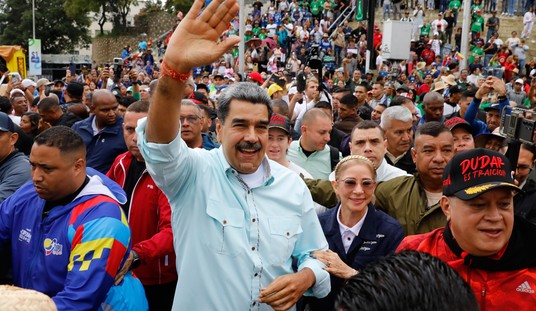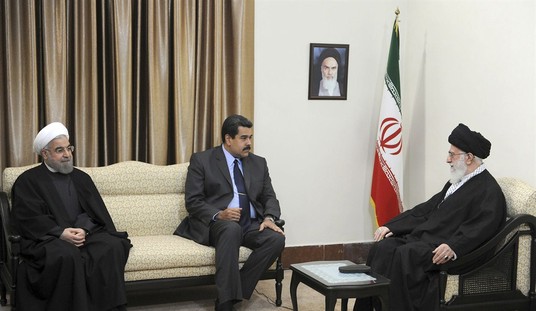13. Bess Myerson
Recognizing a woman who appears to have parlayed her Miss America recognition into a minor-league acting gig may not seem logical, until you realize that Bess Myerson, the first Jewish Miss America, paved an uphill path for diversity in the pageant circuit. She was told by one Miss America exec that she ought to change her name to something “more gentile” and refused. Pageant sponsors refused to hire her as a spokeswoman and certain sites with racial restrictions refused to have her visit as Miss America. This was of no consequence to Miss Myerson, who was the first Miss America to win an academic scholarship. The racism she confronted was motivation for a lifetime’s work with organizations like the ADL, NAACP, and Urban League. She would go on to co-found The Museum of Jewish Heritage in New York and make boundless contributions to the city’s art community. Along with becoming a television personality, Myerson received several presidential appointments in the 1960s and ’70s and would receive two honorary doctorates.
12. Emma Lazarus
A longtime Jewish American with Sephardic roots, Emma Lazarus was a prominent poet from New York City. Motivated by George Eliot’s Zionist novel Daniel Deronda, Lazarus explored her Jewish heritage and became acutely aware of Russian antisemitism and the plight of Ashkenazi Jewry. A Zionist advocate 13 years before Theodor Herzl supposedly coined the term, Lazarus was a champion of Jewish immigrants in America, whose lives inspired her poem The New Colossus, mounted on the pedestal of the Statue of Liberty:
Not like the brazen giant of Greek fame,
With conquering limbs astride from land to land;
Here at our sea-washed, sunset gates shall stand
A mighty woman with a torch, whose flame
Is the imprisoned lightning, and her name
Mother of Exiles. From her beacon-hand
Glows world-wide welcome; her mild eyes command
The air-bridged harbor that twin cities frame.
“Keep, ancient lands, your storied pomp!” cries she
With silent lips. “Give me your tired, your poor,
Your huddled masses yearning to breathe free,
The wretched refuse of your teeming shore.
Send these, the homeless, tempest-tost to me,
I lift my lamp beside the golden door!
11. Gilda Radner
https://www.youtube.com/watch?v=OlQ9iOir6j8
The supremely talented actress and comedian broke new ground for Jewish girls in the 1970s. As one of the three original cast members of SNL who didn’t partake in the coke habit back stage, Radner created a series of unforgettable characters. With Jewess Jeans, Radner not only mocked JAPs (Jewish American Princesses) and Jordache’s sense of cool, she also proved that Jewish women could be sexy and hilarious at the same time. She battled a lifetime eating disorder and cancer. Her marriage to Gene Wilder, one of the coolest Jewish guys of the era, is a love story with a legacy that has continued to honor her life long after her untimely passing with the creation of Gilda’s Clubs and the Gilda Radner Ovarian Detection Center at Cedars-Sinai Hospital.
10. Lillian Wald
In the late 1800s, Lillian Wald recruited her fellow New York nurse, Mary Brewster, to form what would become the first visiting nurses association in America. By 1893, their efforts became known as the Henry Street Visiting Nurses Service among the tenements of the Lower East Side. Wald convinced the city’s Board of Education to put nurses in public schools and begin a program of public nursing. She championed the causes of immigrants, including abolishing child labor and protections for pregnant workers. By 1916, her visiting nurses service employed over 100 nurses and became known as the Henry Street Settlement House, a social services operation that continues to service the local population today. A spin-off, the Visiting Nurse Service of New York, “is the largest not-for-profit home health care agency in the nation, making over two million professional home visits to more than 100,000 patients each year.”
9. Ernestine Rose
Ernestine Rose fled her home in Poland at the age of 16 after rejecting an arranged marriage. She traveled to Germany and eventually wound up in England, beginning a career as a speaker for social reforms. She married William Rose and together the two would immigrate to America, where Ernestine would champion abolition and women’s rights. At the first National Women’s Rights Convention in 1850, Rose declared, “We have heard a great deal of our Pilgrim Fathers but who has heard of the Pilgrim Mothers. Did they not endure as many perils, encounter as many hardships?” Susan B. Anthony listed Rose as one of the major motivators behind the creation of the women’s rights movement in America. Later, when one newspaper omitted Rose’s name among Anthony’s and others, the editor of the Boston Investigator responded, “to omit her name is like playing Hamlet with the character of Hamlet left out.”
8. Rebecca Gratz
The Gratz family were patriotic Ashkenazi immgrants who supported the Continental Army, established Philadelphia’s first synagogue, and founded Gratz College. Rebecca Gratz, famously known as the inspiration for the character Rebecca in Sir Walter Scott’s Ivanhoe, founded the Philadelphia Orphan Society in 1815 and the Hebrew Sunday School Society, which would become the model for Jewish education throughout the country. Gratz proved to a predominantly Christian population that one could be both fully Jewish and fully American, an unknown concept to European immigrants acculturated to the racial and economic class systems of the old world.
7. Henrietta Szold
The original Yentl, Henrietta Szold immersed herself in Jewish education at a time when most women were busy raising good Jewish babies. Despite impressive credentials, including a career in Jewish teaching and position with the Jewish Publication Society, the Jewish Theological Seminary would only permit Szold to take classes if she waived her right to earn a Rabbinical degree, a privilege reserved for men only in 1902. Szold founded Hadassah, the Jewish Women’s Organization of America, championed Zionism, and helped run Youth Aliyah, an organization that rescued some 30,000 Jewish children from the hands of the Nazis. Szold pioneered equal rights for women in Judaism. Sadly, her one heartbreak was never having a child of her own.
6. Gertrude Elion
Motivated to find a cure for cancer, Gertrude Elion charted the path for female scientists in America. Dodging antisemitic jokes from supervisors, Elion worked her way through graduate school, landing a job in pharmaceuticals in 1944. She would go on to be credited with “the development of the first chemotherapy for childhood leukemia, the immunosuppressant that made organ transplantation possible, the first effective anti-viral medication, and treatments for lupus, hepatitis, arthritis, gout, and other diseases.” The recipient of 25 honorary doctorates and a Nobel Prize, Elion was the first woman to be inducted into the National Inventor’s Hall of Fame. When commenting on her achievements, Elion said simply, “It’s amazing how much you can accomplish when you don’t care who gets the credit.”
5. Angela Warnick Buchdahl
Not many people, including Jews, realize that Jewish comes in all nationalities. Rabbi and Cantor Angela Warnick Buchdahl is living proof that one need not be white to be a good Jew. Born to a Korean Buddhist mother and a Jewish American father, Buchdahl was raised Jewish and is the first Asian-American, and the first female religious leader in Judaism, to be both ordained as a Rabbi and invested as a Cantor. The first woman and first Asian-American to become the Senior Rabbi of New York’s Central Synagogue, Buchdahl champions a Jewish identity grounded in prayer, belief and spirituality.
4. Deborah
Although she is introduced as the “wife of Lapidot” her husband doesn’t make an appearance in the short Biblical tale of one of the first Judges of Israel. Deborah, a prophetess who hangs out under the palm trees, warns Israel’s mighty General Barak that God has commanded him to take the armies of Sisra. Barak, the mighty general that he is, refuses to do so unless Deborah marches at his side. “Certainly I will go with you,” Deborah replies. “But because of the course you are taking, the honor will not be yours, for Adonai will deliver Sisra into the hands of a woman.”
3. Ofra Haza
The gorgeous Israeli singer called on her Yemenite roots and fused eastern and western styles, creating music that built bridges between traditional and commercial, Arab and Jewish, and Israeli and American cultures. Her 1984 hit “Im Nin’Alu” broke new ground for Israeli music. The video aired across MTV Europe, catching the eye of DJs who crafted it into multiple chart-topping mixes in both Europe and America. She would go on to collaborate with international stars including Sarah Brightman and Paula Abdul, and share duets with the likes of Iggy Pop and Michael Jackson. Haza was a featured artist on several movie soundtracks including Dick Tracy and Prince of Egypt. Haza died unexpectedly at the age of 42. She continues to be remembered as one of the most powerful and resonant artists in Israel.
2. Ruth
The Biblical answer to the question “Do you have to be born Jewish to be Jewish,” Ruth the convert, the great-grandmother of King David, earned her place in the Messiah’s lineage with her promise, “Where you go I will go, and where you stay I will stay. Your people will be my people and your God my God.” Her humble dedication won the heart of Boaz, whose Biblical act of redemption earned Ruth the blessing of the Israelite community and the title of “Mother of Royalty.” The Book of Ruth is read every Shavuot to remind us to have a heart of Ruth when accepting the gift of the Torah, the covenant that grants us our Jewish identity.
1. Hannah Senesh
https://www.youtube.com/watch?v=9GzHz4y3fGE
Born in Hungary in 1921, Senesh immigrated alone to the British Mandate of Palestine in 1939. By 1941 she joined the Haganah, the Jewish defense predecessor to the IDF, and in 1943 she enlisted in the Women’s Auxiliary Air Force of the British Army. She trained in Egypt as a paratrooper and became one of 37 brave Jewish soldiers who parachuted into Yugoslavia to rescue Hungarian Jews on the verge of being deported to Auschwitz. Despite her arrest, imprisonment and torture at the hands of the Nazis, Senesh refused to divulge the details of her mission. She was put to death by firing squad at the age of 22. Her poetry lives on in Israel. Eli, Eli (My God, My God), set to music by David Zahavi, has been sung by the likes of Ofra Haza and Regina Spektor. The title of the most recent Senesh documentary comes from the last poem she wrote, Blessed is the Match:
Blessed is the match consumed in kindling flame.
Blessed is the flame that burns in the secret fastness of the heart.
Blessed is the heart with strength to stop its beating for honor’s sake.
Blessed is the match consumed in kindling flame.
The courageous legacy of Hannah Senesh continues to be lived out by the women of the Israeli Defense Forces, 33% of all soldiers and 51% of its officers, who perform a mandatory 24 months of service and remain in the reserves until the age of 24.









Join the conversation as a VIP Member